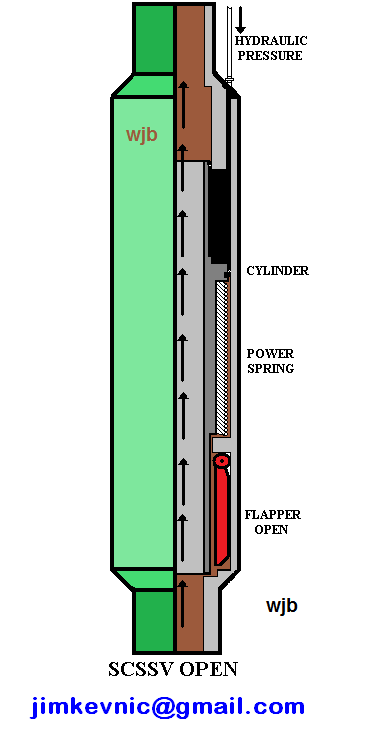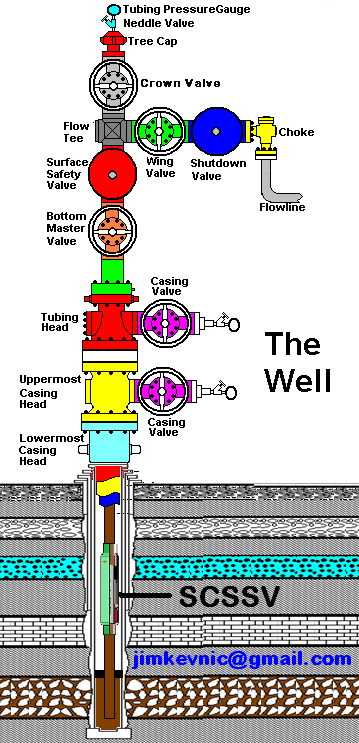Surface Controlled Subsurface Safety Quiz Questions
(271).jpg)
In mining, it is common for things and processes to be controlled from the surface while they actually occur deep below the surface. Safety measures are of great essence in this risky line of duty. Learn more below!
- 1.
SCSSV stands for...
- A.
Surface Controlled Subsurface Safety Valve
- B.
Subsurface Controlled Subsurface Safety Valve
- C.
Surface Cancellation Subsurface Safety Valve
Correct Answer
A. Surface Controlled Subsurface Safety ValveExplanation
SCSSV stands for Surface Controlled Subsurface Safety Valve. This valve is used in oil and gas wells to control the flow of fluids and prevent any potential safety hazards. It is designed to be controlled from the surface and is installed in the subsurface of the well. The term "Surface Controlled" refers to the ability to control the valve's operation from the surface, while "Subsurface Safety Valve" indicates its location and purpose in the well.Rate this question:
-
- 2.
The purpose of the valve is to provide a shutoff of the well’s flow stream in the event that the wellhead cannot be used to shut off the flow due to extreme damage or to failure caused by fire.
- A.
True
- B.
False
Correct Answer
A. TrueExplanation
The purpose of a valve is to control the flow of a substance, such as gas or liquid, through a pipe or conduit. In the case of a well, a valve is essential for shutting off the flow stream in situations where the wellhead is damaged or inoperable, such as during a fire. This ensures that the flow of substances from the well can be stopped when necessary, preventing further damage or hazards. Therefore, the statement is true.Rate this question:
-
- 3.
The wellhead panel supplies the hydraulic pressure to hold the valve open as long as the platform safety system indicates that it is safe to do so.
- A.
True
- B.
False
Correct Answer
A. TrueExplanation
The wellhead panel is responsible for providing hydraulic pressure to keep the valve open when the platform safety system determines that it is safe. This indicates that the valve will remain open as long as the safety system confirms that there are no risks or dangers present. Therefore, the statement is true.Rate this question:
-
- 4.
An ESD activated by personnel will cause an SCSSV to...
- A.
Open
- B.
Close
- C.
Not respond
Correct Answer
B. CloseExplanation
When an ESD (Emergency Shut Down) system is activated by personnel, it is designed to initiate a safety response in order to prevent any potential hazards. In this case, the ESD activation will cause the SCSSV (Surface Controlled Subsurface Safety Valve) to close. This action is taken to shut off the flow of fluids and prevent any further release or escape of potentially dangerous substances. By closing the SCSSV, the ESD system ensures the safety of the operation and minimizes the risk of any adverse consequences.Rate this question:
-
- 5.
The SCSSV is located a minumum of _____________ below the mudline.
- A.
50 ft
- B.
75 ft
- C.
100 ft
Correct Answer
C. 100 ftExplanation
The SCSSV (Surface Controlled Subsurface Safety Valve) is located a minimum of 100 ft below the mudline. This valve is a safety device used in oil and gas wells to prevent uncontrolled flow of fluids. Placing it at a depth of 100 ft ensures that it is securely positioned below the mudline, which is the level at which the well is drilled into the earth's surface. This depth helps to protect the valve from external factors and allows it to effectively control the flow of fluids in the well.Rate this question:
-
- 6.
The pressure required to shut in the SCSSV equals the SITP plus the Spring rating in the SCSSV, plus _____________psi.
- A.
100 psi
- B.
1,000 psi
- C.
10,000 psi
Correct Answer
B. 1,000 psiExplanation
The pressure required to shut in the SCSSV (Surface Controlled Subsurface Safety Valve) consists of three components: the SITP (Surface Injection and Testing Pressure), the Spring rating in the SCSSV, and an additional 1,000 psi.Rate this question:
-
- 7.
SCSSV shall be tested once every 9 months.
- A.
True
- B.
False
Correct Answer
B. FalseExplanation
The statement "SCSSV shall be tested once every 9 months" is false. The SCSSV (Surface Controlled Subsurface Safety Valve) is a safety device used in the oil and gas industry to prevent blowouts and uncontrolled flow of fluids. It is required to be tested more frequently than once every 9 months to ensure its proper functioning and reliability. Regular testing and maintenance are essential to ensure the safety and integrity of the well.Rate this question:
-
- 8.
If the pump that controls the SCSSV, will not stop pumping when reactivating the downhole valve, the cause could be...
- A.
Seals in the valve leaking.
- B.
Leaking connections.
- C.
Relief valve failure in the panel.
- D.
All of the above
Correct Answer
D. All of the aboveExplanation
The correct answer is "All of the above". This means that all of the mentioned causes - seals in the valve leaking, leaking connections, and relief valve failure in the panel - could potentially lead to the pump not stopping when reactivating the downhole valve.Rate this question:
-
- 9.
Excess flow rates through the SSCSV valve beyond the design setting will cause the valve to close.
- A.
True
- B.
False
Correct Answer
A. TrueExplanation
Excess flow rates through the SSCSV valve beyond the design setting will cause the valve to close. This means that if the flow rate of fluid passing through the valve exceeds the maximum limit set by the valve's design, the valve will automatically close. This mechanism ensures that the valve can handle only a certain amount of flow, preventing any potential damage or malfunction that could occur if the flow rate exceeds the valve's capacity.Rate this question:
-
- 10.
. Equalizing the pressure across the SSCSV valve will allow the spring to shift the choke bean back in place and open the valve.
- A.
True
- B.
False
Correct Answer
A. TrueExplanation
Equalizing the pressure across the SSCSV valve ensures that the pressure on both sides of the valve is balanced. This allows the spring to exert its force and shift the choke bean back in place, thereby opening the valve. If the pressure is not equalized, the spring may not be able to overcome the pressure difference and the valve will remain closed. Therefore, the statement is true.Rate this question:
-
- 11.
A downhole valve set in a landing nipple is tested once a year.
- A.
True
- B.
False
Correct Answer
A. TrueExplanation
The statement is true because a downhole valve set in a landing nipple is typically tested annually. This is done to ensure that the valve is functioning properly and to prevent any potential issues or failures in the downhole equipment. Regular testing helps to maintain the integrity and reliability of the valve, ensuring that it is in good working condition and ready for use when needed.Rate this question:
-
- 12.
The SCSSV will close in responce to...
- A.
ESD
- B.
TSE
- C.
Fire detecting devices
- D.
All of the above
Correct Answer
D. All of the aboveExplanation
The SCSSV (Surface Controlled Subsurface Safety Valve) is designed to close in response to various emergency situations. ESD (Emergency Shut Down) refers to a system that automatically shuts down equipment in case of a dangerous event. TSE (Trip Speed Emergency) is a mechanism that activates when there is an abnormal pressure increase. Fire detecting devices are sensors that detect the presence of fire. Therefore, all of the mentioned options can trigger the SCSSV to close as a safety measure in different emergency scenarios.Rate this question:
-
- 13.
The SCSSV will close within 4 minutes after the ESD is pulled
- A.
True
- B.
False
Correct Answer
B. FalseExplanation
The statement is false because the SCSSV (Surface Controlled Subsurface Safety Valve) will not close within 4 minutes after the ESD (Emergency Shutdown) is pulled. The SCSSV is designed to close immediately when the ESD is activated, ensuring the safety of the well and preventing any potential blowouts or uncontrolled releases of pressure. Therefore, the correct answer is false as the SCSSV closes immediately, not within 4 minutes.Rate this question:
-
Quiz Review Timeline +
Our quizzes are rigorously reviewed, monitored and continuously updated by our expert board to maintain accuracy, relevance, and timeliness.
-
Current Version
-
Mar 21, 2023Quiz Edited by
ProProfs Editorial Team -
Oct 29, 2010Quiz Created by
Laffienero








